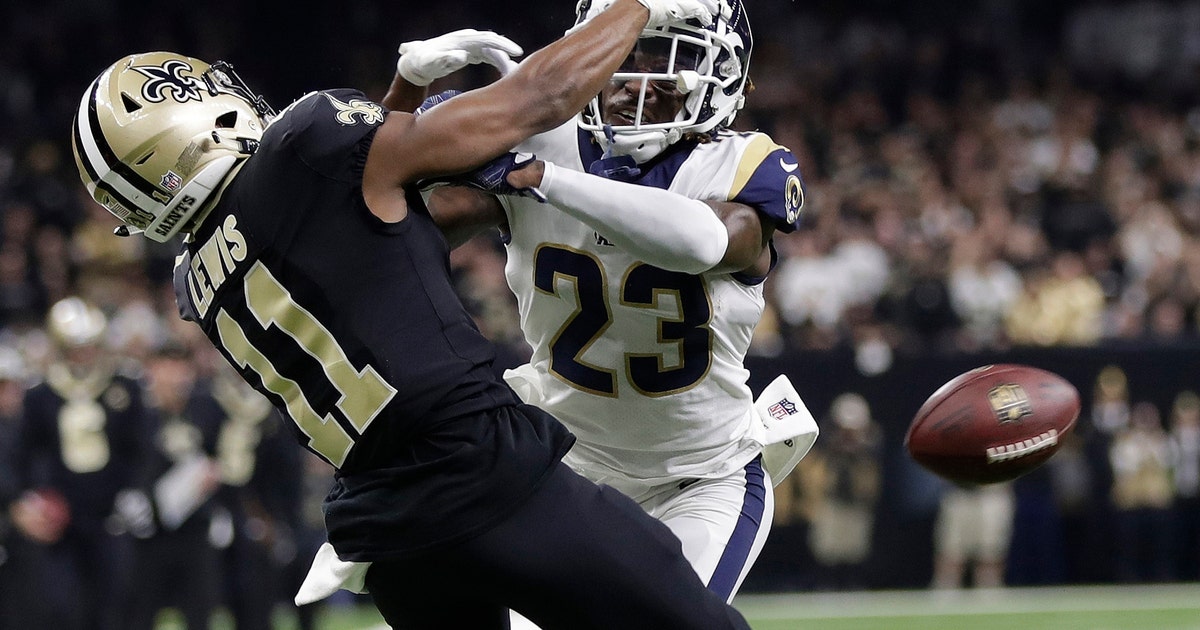Analysis: NFL blew it with pass interference reviews rule


Remember back to the NFC championship game in the 2018 season. Deep in the fourth quarter at the Superdome.
And the missed call — one of the worst officiating gaffes in pro football memory.
Not only did it likely prevent the New Orleans Saints from winning the conference title, and perhaps beating New England in the Super Bowl, but the embarrassment of the lack of yellow flags on the play sent the NFL into crisis mode.
What the league came up with was a one-year trial in which pass interference calls could be reviewed in the video replay system; it was hailed as major step to aid officiating.
But the NFL blew it, and on Thursday, barring a stunning turnaround, the rule will disappear.
“We passed that rule for one year,” says Falcons President Rich McKay, the longtime co-chairman of the powerful competition committee. “Forever prior to that time, we were really nervous about having a review of something that is a subjective foul. There is nothing more subjective than offensive and defensive pass interference. It’s all in the eyes of beholder.
“We always had a fear that if we do that, you’re necessarily going to have complete disagreement about whether a play should be reversed or not reversed. It’s not black and white, it’s gray. On all other reviews, there are objective markers. Did his foot touch the white line? Did the ball cross the plain? Those are objective markers, not subjective markers.”
Early last season, virtually every challenge on interference was denied. Some coaches became reticent to even bother.
Later in 2019, officials seemed to open up their consideration of the challenges. But there was little to no consistency to their decisions.
Mike Pereira, who oversaw league officiating for more than a decade and now is an analyst for Fox, believes the system set up was doomed for failure.
“It is the toughest call to make; I think replay proved that last year,” Pereira told SiriusXM Radio. “Is it offense, is it defense, and it was that simple — that is the way I used to teach it in the NFL. Block/charge. If it is a charge in the NBA or in college basketball, it is offense (at fault). When it comes to football, if it is a block it becomes a defensive foul. And it is really the simplest way to look at it when you are talking about collisions. Not push-offs, but collisions.”
Unfortunately, Pereira believes, the NFL expanded what it was examining in replays.
“I think the real case was the fact they used a different standard in replay than they did on the field, and that was where everybody got lost,” he said. “They wanted to adopt a rule that basically addressed the one play that happened in the Saints-Rams game, and basically only get involved if it reached that level, which was like a huge, huge miss.
“Poor (NFL officiating chief) Al Riveron is trying to decide is this big enough or is it not big enough? I can put myself in his seat, ‘Yep this is interference, but is it big enough for me to get involved?’ That was the downfall of the rule.”
Few would argue that the league has far too many rules and tangents to those rules. When the NFL simplifies things, such as with the hotly debated “catch rule,” it eventually reaches something logical.
What it came up with after the Rams-Saints fiasco was, it turns out, no help at all.
“It could have worked if you just said: ‘Look it, here is what we are going to do: is it pass interference or not? Let’s forget a bigger standard, if we look at it and slow it down and see that the contact is early, then it is a foul.’ And that would have been the only way for it to succeed.”
It didn’t. And on Thursday, it will be gone.
“I did not feel like it worked,” McKay said. “We put New York in some really tough, tough spots. Whatever New York did, someone was going to criticize it on the other side. It was a no-win situation. That had always been the fear and was why we were scared — or I should say hesitant — to make those fouls subject to review. We didn’t make a recommendation to have a continuation of that after the one-year trial, so the rule dies on its own accord.”








